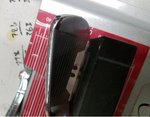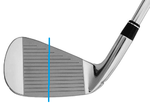Had another post, but it seemed to have disappeared.
Who on this board checks their own lofts/lies? And is there anyone that uses a cost effective device. I'm not interested in spending money on the big equipment. Just a way for me to check, and if its off by a lot; know it and take it to a pro to fix.
Who on this board checks their own lofts/lies? And is there anyone that uses a cost effective device. I'm not interested in spending money on the big equipment. Just a way for me to check, and if its off by a lot; know it and take it to a pro to fix.












